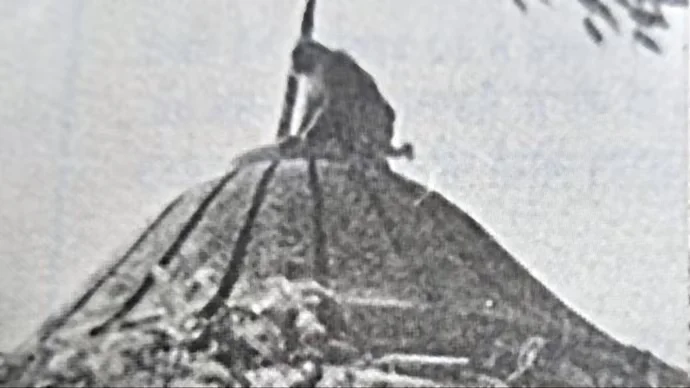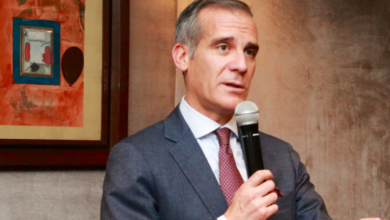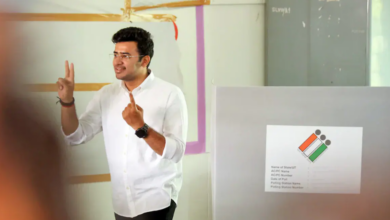Story of the iconic monkey image of Ram Mandir movement
'Karsevaks' broke through barricades and put up saffron flags atop the Babri Masjid on October 30, 1990. After security personnel forced them away, a monkey sat on the central dome of the mosque, which prevented one of the flags from being removed. Here's revisiting that iconic image.

It was October 30, 1990, a day India will never forget. An iconic photo from that historic day of the Ram Mandir movement has returned to our collective memory as the country prepares for the ‘Pran Pratishtha’ (consecration) ceremony of Lord Ram’s idol at Ayodhya today.
Around 28,000 personnel of the Uttar Pradesh Armed Constabulary were deployed in Ayodhya on October 30, 1990, to thwart the Ram Mandir ‘Kar seva’ organized by the Vishwa Hindu Parishad (VHP).
Such was the security bandobast that then Uttar Pradesh Chief Minister Mulayam Singh Yadav boasted “Ayodhya mein parinda bhi par nahi maar sakta“.
The entire road to the Babri Masjid was barricaded, with a sea of armed khaki-clad men securing it.
“Amid the struggle between the karsevaks and the security personnel, a sadhu who knew how to drive a bus jumped onto the seat of a police bus that was used to detain some karsevaks,” Swami Vigyananand, Joint General Secretary of the Vishva Hindu Parishad, tells IndiaToday.in.
Calling it a “watershed moment”, Swami Vigyananand says, “The sadhu plowed through the barricades and opened the road for hundreds of karsevaks.”
“Karsevaks braved hundreds of security personnel and trooped towards the disputed Babri Masjid. Some of them managed to climb on the dome of the disputed structure and planted ‘Bhagwa Dhwaj‘ (saffron flags),” says Swami Vigyananand.
The security personnel deputed there soon began lathi-charging and shooting at the karsevaks.
“Facing the offensive by the security personnel, the karsevaks were forced to retreat by the evening,” says Swami Vigyananand.
Officials wanted the saffron flags removed from the domes but were faced with a unique situation.
“They found that a monkey had taken position on the middle dome of the mosque. The police personnel saw the monkey as an avatar of Lord Hanuman who had appeared to protect the flag. They were unwilling to disturb it,” he says.
“The monkey kept sitting near the flag for hours. Late at night, after the monkey left the dome, three jawans climbed atop the dome and removed the flag,” says Swami Vigyananand.
The iconic image of the monkey atop the dome, which was carried by several Hindi newspapers on November 1, 1990.
Though official records say 20 people were killed in the police firing ordered by Mulayam Singh Yadav on October 30 and November 2, eyewitness accounts put the number at scores. An Ayodhya-based journalist who has documented the attack on karsevaks says that the volunteers were fired upon even from a helicopter.
There has been recurring imagery of the monkey (a symbol of Hanuman) in the entire Ram Mandir movement.
Another photo from India Today’s archives takes the story further. This photo is from July 23, 1992, and clicked by Pramod Pushkarna.
‘Kar sewa’ for the Mandir was suspended after the brutal killings of the karsevaks and initiated in July 1992. Though karsevaks reached Ayodhya, the program was postponed, says Swami Vigyananand.
The 1992 photo also shows a monkey sitting on the central dome of the Babri Masjid.
“I was intrigued that while security personnel and barricades prevented people from reaching the disputed spot, a monkey had reached the top of the dome,”, when asked what made him take that photo.
Photojournalist Pramod Pushkarna, now 76, says he made several trips to Ayodhya during the Ram Mandir Movement days. He says people were calling the monkey “Hanuman ka avatar”.




